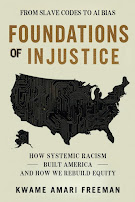"Lending in the Dark: Local Newspaper Closures and Discrimination in Mortgage Lending," by Tran Huynhl. IMPRESSUM Jena Economics Research Papers. January, 2025. Friedrich-Schiller-University Jena. https://EconPapers.repec.org/RePEc:jrp:jrpwrp:2025-0002.
This paper examines the extent to which local newspaper closures affect discrimination against minority borrowers in mortgage lending. Following a newspaper closure, interest rate differentials between minority (black or Hispanic) and comparable non-minority borrowers increase by 5.5 basis points, widening the existing gap in mortgage outcomes between the two groups. This effect cannot be explained by differences in credit risk or underlying economic conditions. The findings suggest that the local press plays an important role in monitoring lending practices and reducing information asymmetries in the mortgage market.
Using a difference-in-differences methodology that exploits the staggered closure of U.S. local newspapers between 2018-2021, and a significant increase in discriminatory lending practices following a local newspaper closure. Specifically, the mortgage rate gap between minority (black or Hispanic) and comparable non-minority borrowers increases by about 5.5 basis points (bps) on average in the three years following a newspaper closure. This widening gap in mortgage rates suggests that minority borrowers face higher lending rates when local media scrutiny is reduced. A rich set of borrower and loan controls (e.g. credit score, income, LTV ratio, loan amount, ...) provides evidence that this effect is not due to differences in borrower creditworthiness or loan structure. Local information vacuums created by newspaper closures can lead to costly borrowing decisions by minority borrowers, thereby exacerbating racial and ethnic disparities in mortgage outcomes.
There are two main channels through which newspaper closures could affect discrimination against minority borrowers. First, a fundamental responsibility of the news media, known as the watchdog role, is to monitor local political, economic and social issues (Dyck et al. 2008; Snyder & Stromberg 2010; Bennett & Serrin 2005). Since the early twentieth century, local newspapers in the US have reported on racial segregation and bank redlining in their neighborhoods, where minority borrowers were denied access to mortgages or subjected to unfavorable terms through subprime loan contracts (Rothstein 2017; Carroll 2017). Early newspaper reports of such discriminatory lending practices were the main force driving academic research into the issue (Black 2023).1 As evidence of racial and ethnic disparities in mortgage. The seminal studies by Black et al. (1978) and Munnell et al. (1996) were among the first to use statistical techniques and models to examine lending discrimination on the basis of race. outcomes became more concrete and widespread in the news and in academic studies, several anti-discrimination laws and regulations were enacted, notably the Fair Housing Act (FHA) of 1968, the Equal Credit Opportunity Act (ECOA) of 1974, the Home Mortgage Disclosure Act (HMDA) of 1975, and the Community Reinvestment Act (CRA) of 1977. Along with bank examiners and consumer protection agencies, local newspapers help monitor lenders to make sure they comply with the law.
The second channel relates to the information intermediation role of the news media (Bushman et al. 2017; Peress 2014; Gao et al. 2020a). Through comprehensive coverage and timely dissemination of local economic trends, housing market dynamics, and regulatory developments, local newspapers provide valuable insights to both borrowers and lenders, thereby reducing information asymmetries and facilitating transparency in the mortgage market. For example, with accurate information about mortgage products, interest rates, and lending policies, borrowers can make informed decisions and negotiate favorable terms. Most relevant to this context, by documenting and reporting incidents of lending discrimination, local newspapers help raise awareness among minority borrowers about predatory lending and discriminatory practices by certain lenders. As a result, local information vacuums created by newspaper closures can lead to costly borrowing decisions by minority borrowers, thereby exacerbating racial and ethnic disparities in mortgage outcomes.






